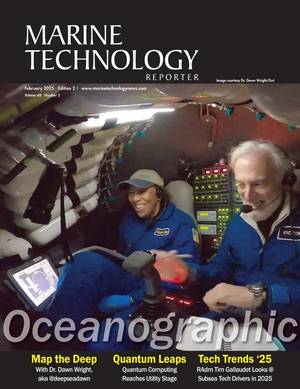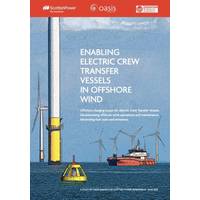
ScottishPower, Oasis Marine Study Proves Feasibility of Offshore Charging
by installing Oasis Power Buoys in the windfarm provides protection from volatile fossil fuel price and the high costs of alternative green fuels, enabling costs to be predictable and in line with the operator’s business model. Its findings were based on the use of three electric CTVs instead of diesel-fueled vessels at a case study windfarm. The study identified potential savings of 140,000 tonnes of CO2 emissions and fuel saving costs of around £15 million over the windfarm’s anticipated 25-year lifetime.The findings are being shared through the Operation Zero initiative, which was
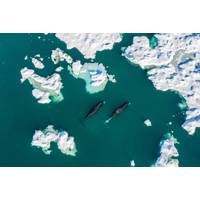
Naturally Quiet
The Arctic’s bowhead whales can live for over 200 years. Imagine what they might hear in that time: screw propellers were only just being used to power ships 200 years ago, and diesel engines appeared some hundred years after that.The underwater radiated noise of shipping has grown globally, but the Arctic is a special place. It has been partially shielded from shipping noise. Sea ice shields and diffuses underwater sound, so belugas and narwhals, for example, can find shipping noise particularly disturbing – perhaps leaving the area for days. There have been reports of belugas
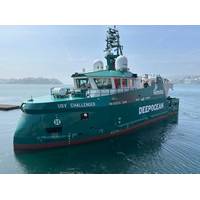
Newbuild USV Challenger Getting Ready for Remote-Controlled Subsea Work
.The vessel - named USV Challenger - will shortly arrive at DeepOcean’s subsea base at Killingøy in Norway, where it will undergo trials of its launch and recovery system (LARS) for the onboard ROV.The USV Challenger is 24 meters long and 7.5 meters wide. It is equipped with a hybrid diesel-electric propulsion system and a battery package that allows the uncrewed vessel to operate offshore for up to 30 days without charging or refueling.Designed by DeepOcean, the LARS consists of an electrical winch, a sheave wheel trolley, kicker and rear hatch.Following maritime authority approvals
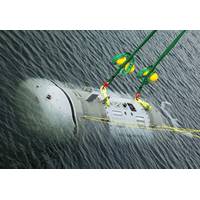
Navy Signals Need for New Large AUV Class
largest UUVs are the Boeing XLUUV and Snakehead LDUUV. The Navy accepted delivery its first Extra Large Unmanned Undersea Vehicle (XLUUV) Test Asset System in December 2023. The Boeing Orca XLUUV, designated XLE0, from the manufacturer Boeing.The Orca XLUUV is a cutting-edge, autonomous, unmanned diesel-electric submarine with a modular payload section to execute a variety of missions critical to enhancing the Navy’s undersea prowess. Configured to accommodate various payloads, the Orca XLUUV allows for the seamless integration of sensors, communication systems, and other mission-specific

ASL Environmental: Tidal Currents Study Underway in Newfoundland and Labrador
successful completion of an initial multi-week study to measure tidal currents in collaboration with the Nunatsiavut Government and Oceans North. This initiative aligns with the Nunatsiavut Energy Security Plan to explore clean, renewable energy solutions for coastal communities and reduce dependence on diesel-generated electricity.Current transect surveys were initially carried out with Acoustic Doppler Current Profilers (ADCPs) over the broader study area. ADCPs were then deployed on moorings at three strategic locations within the Rigolet Narrows waterway and recovered in September 2024. The data from
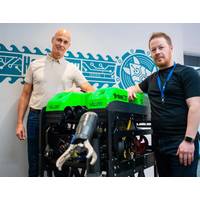
HonuWorx Takes Delivery of its First ROV
transport vehicles to worksites. By removing the need for surface ships, the Loggerhead all-electric uncrewed system has the potential to vastly reduce the emissions, cost and risk of underwater robotics operations. Per vessel displaced, Loggerhead will remove the equivalent emissions of 4,000 petrol or diesel cars," the company said in a statement

All American Marine Delivers Cal Poly Humboldt Catamaran
to US Coast Guard Subchapter T standards, it is optimized for near-coastal and offshore operations, supporting Cal Poly Humboldt’s research initiatives in oceanography, marine ecosystems, and the emerging offshore wind industry.The vessel is powered by twin MAN D2862LE43B EPA Tier 4 engines with diesel particulate filters and meets California’s stringent environmental standards while delivering exceptional performance. The vessel is capable of fully laden cruising at speeds exceeding 28 knots at 80% engine load.Featuring Teknicraft’s signature hydrofoil-assisted hull design, the vessel
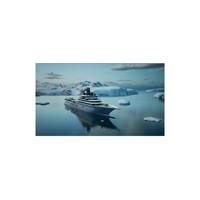
REV Ocean Finds Ship Management Partner for New Expedition Vessel
research across the entire marine ecosystem, using advanced technology systems.Scientists and other experts will use it for research expeditions, seeking to solve issues related to the impact of CO2 emissions, plastic pollution, and unsustainable fishing on the ocean.The vessel is constructed to run on diesel-electric engines, with an additional 3 MW lithium-ion battery pack for peak shaving, ensuring optimum efficiency onboard.An independent science and innovation board will evaluate and recommend research projects for REV Ocean to pursue and ensure the highest scientific standards and research quality

AiP Granted for Autonomous Subsea Inspection USV
2 (DP2) capability, the vessel can deploy a work-class electric ROV at depths of up to 2,500 meters. Its ability to perform multiple tasks offers the potential to streamline workflows, minimize operational downtime, reduce costs, and enhance the overall efficiency of offshore projects.Powered by a hybrid diesel-electric system with the potential for future migration to hydrogen, the USV significantly reduces carbon emissions, and meets the demand for sustainable solutions in offshore operations
 February 2025
February 2025
